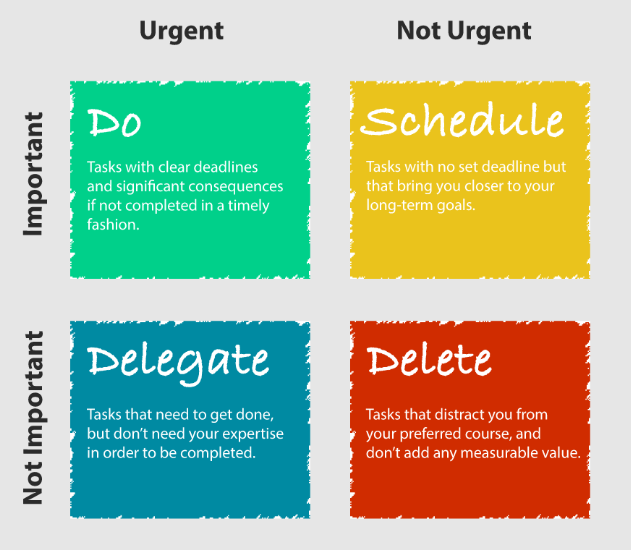
What is important is seldom urgent and what is urgent is seldom important ~ Dwight Eisenhower
Working for hours on a daily basis but not seeing the right results can be a frustrating situation. However, many people relate to this problem.
And it all might be because of poor time management and prioritisation. The issue is most people focus on urgent tasks often forgetting about things that contribute to their long-term goals and repeat. It is a viscous cycle that not only kills your time but also steals the opportunity to work towards what’s important for you.
Making a clear framework of what is important and urgent can assist you in saving time and energy for real tasks rather than being busy all day.
What is the Eisenhower Box method
Dwight Eisenhower was an incredibly productive person. He was the 34th President of the United States and used a key strategy to manage his time and work effectively for decades. One of his most well-known productivity methods is the Eisenhower Matrix or Box.
Popularised by author Stephen Covey in his book, this task prioritisation hack got lots of attention for being simple and effective. Here is how it works.
.thumbnailWrapper
width:6.62rem !important;
.alsoReadTitleImage
min-width: 81px !important;
min-height: 81px !important;
.alsoReadMainTitleText
font-size: 14px !important;
line-height: 20px !important;
.alsoReadHeadText
font-size: 24px !important;
line-height: 20px !important;

Eisenhower Box Method: The ultimate decision-making tool
The Eisenhower Matrix or Box method lays out a simple principle to delegate tasks. It helps you divide all the work into four sections and prioritise them accordingly. Here is how it is split.
- Urgent and important (tasks you are going to do immediately).
- Important, but not urgent (tasks you can schedule to do later).
- Urgent, but not important (tasks you will delegate to someone else).
- Neither urgent nor important (tasks that you will completely eliminate).
<figure class="image embed" contenteditable="false" data-id="530720" data-url="https://images.yourstory.com/cs/2/07f6d7f0ed8e11ed819979969b4b51e2/Eisenhowermatrix-1699980827243.PNG" data-alt="Eisenhower Matrix" data-caption="
Source: Slab.com
” align=”center”> Source: Slab.com
Do
The first section comes under the “Urgent and important” category. These are tasks which have tight due dates or deadlines. Not doing them can result in serious consequences and affect your long-term growth. For instance, attending an urgent meeting regarding a project or resolving any technical glitches in your website.
Schedule
The second quadrant is to list out tasks which are important but do not have a deadline. So, such crucial work can be scheduled for later. This section is often used by productive and successful people as it brings them satisfaction. The author Covey named this as the “Quadrant of Quality”.
Delegate
The third quadrant is where most people struggle with. These are tasks which are urgent but are not important. Generally, the things that interrupt your desired pathway fall under this section.
This is why people think they are working hours and hours on urgent tasks which are crucial but in reality, it does not help in reaching their long-term goals. Hence, tasks within this part should be delegated to others.
Eliminate
As the name suggests, this particular section is about things that are just distractions as they are not urgent or important to do. So, such work should be eliminated from your priority list.
Urgent Vs important
The Eisenhower Matrix was popularised by the author Stephen Covey in his best-selling book called “The 7 Habits of Highly Effective People“. This method of task delegation is based on a core concept of understanding the difference between what is important and urgent.
While the terms may seem synonymous, they hold distinct meanings. Here’s how they can be distinguished.
Urgent
Work that needs to be done ASAP or is time-sensitive can be labelled as urgent. These are tasks that keep people on edge and put a person in a reactive mode. However, not all urgent work is really crucial, for instance replying to certain emails.
Important
Important tasks are the ones that truly help you achieve your goals or mission in the long term but since they do not have a deadline, they can be neglected easily. Even so, some important things can be urgent but majorly they aren’t to be done immediately. Also, crucial work keeps a person in a calm mindset.
In short, the key is to focus on tasks that are truly important and can lead to satisfaction and happiness. Take charge of your time, prioritise what truly matters, and watch your productivity soar.











